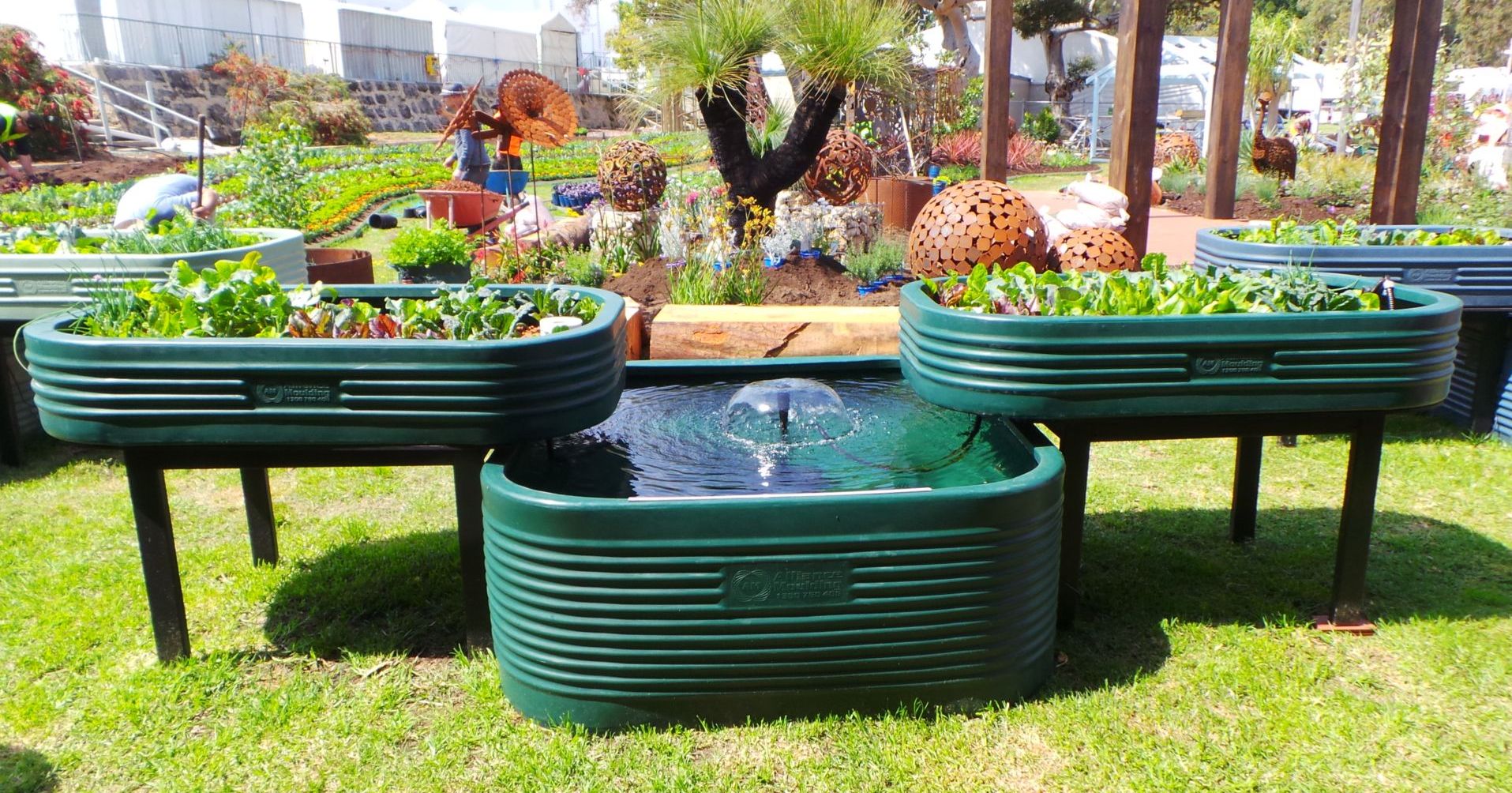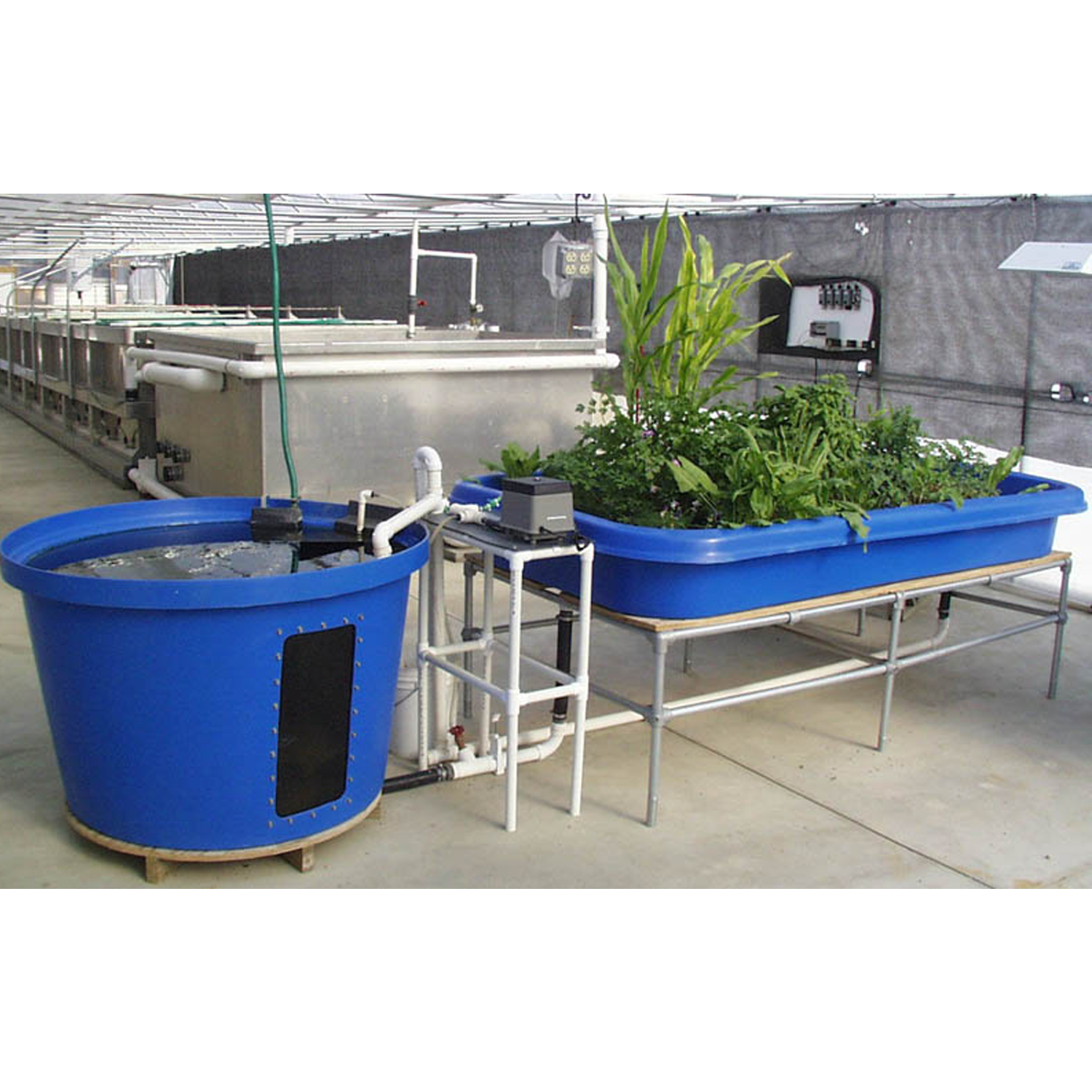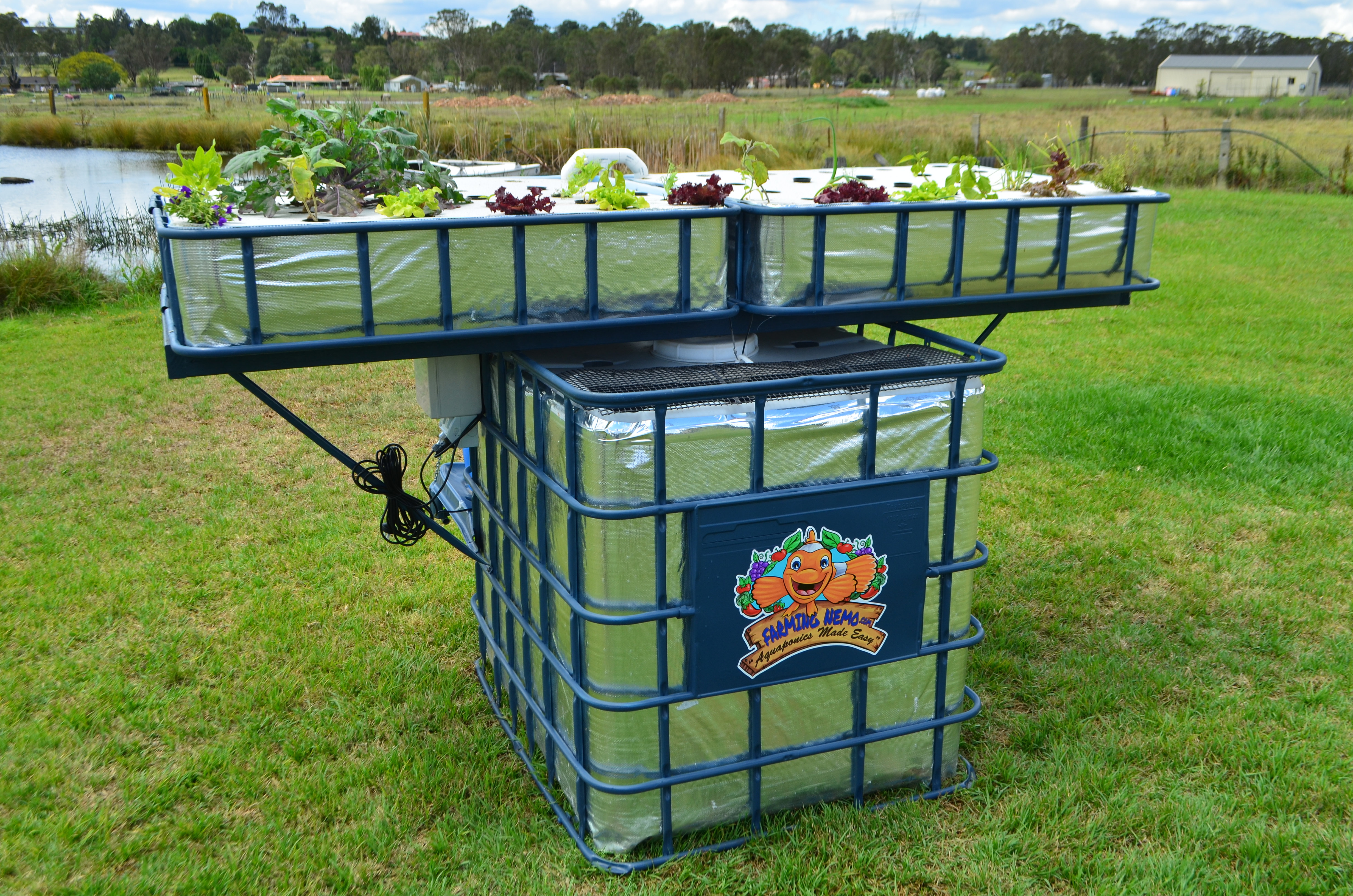Aquaponics for sale offers a unique opportunity to invest in a sustainable and profitable food production system. This guide provides a comprehensive overview of aquaponics, from its market potential to system design, plant and fish production, management practices, economic considerations, and social and environmental benefits.
Whether you’re a seasoned farmer or a novice looking to explore this innovative industry, this guide will equip you with the knowledge and insights to make informed decisions.
Aquaponics combines aquaculture (fish farming) and hydroponics (plant cultivation in water) to create a closed-loop ecosystem that maximizes resource utilization and minimizes waste. With its ability to produce fresh, organic produce and fish while conserving water and reducing environmental impact, aquaponics has gained significant traction in recent years.
Aquaponics Market Overview

Aquaponics, a sustainable food production system that combines aquaculture and hydroponics, has gained significant traction in recent years. The global aquaponics market is experiencing steady growth, driven by increasing demand for sustainable food sources and advancements in technology.
According to a report by Grand View Research, the global aquaponics market size was valued at USD 1.24 billion in 2022 and is projected to expand at a compound annual growth rate (CAGR) of 14.5% from 2023 to 2030. The market is primarily driven by rising concerns over food security, environmental sustainability, and the increasing popularity of organic and locally sourced food.
Major Market Drivers
- Growing demand for sustainable food production methods.
- Increasing awareness of the environmental benefits of aquaponics.
- Government support and incentives for aquaponics projects.
- Advancements in technology, such as automated feeding systems and water filtration techniques.
Challenges in the Aquaponics Market
- High initial investment costs for setting up an aquaponics system.
- Limited availability of trained professionals in aquaponics.
- Technical challenges in maintaining optimal water quality and fish health.
- Competition from traditional food production systems.
Aquaponics System Components
Aquaponics systems are comprised of several essential components that work together to create a symbiotic relationship between fish and plants. Each component plays a crucial role in maintaining the system’s balance and efficiency.Understanding the function and importance of each component is vital for designing and operating a successful aquaponics system.
This guide will delve into the key components of an aquaponics system, explaining their purpose and providing examples of different types available.
Fish Tank
The fish tank, also known as the aquaculture unit, is the heart of an aquaponics system. It houses the fish, which provide the nutrients for the plants. The size and shape of the fish tank will depend on the number and type of fish being raised.
- Essential for housing fish and providing a controlled environment for their growth.
- Provides a source of nutrient-rich water for the plants.
- Examples: Rectangular tanks, circular tanks, and raceways.
Grow Beds
Grow beds are where the plants are grown. They provide a place for the plants to root and access the nutrient-rich water from the fish tank. Grow beds can be constructed from various materials, including gravel, expanded clay pebbles, and nutrient film technique (NFT) channels.
- Support plant growth and provide a medium for root development.
- Allow plants to absorb nutrients from the water.
- Examples: Deep water culture (DWC) systems, raft systems, and vertical towers.
Water Pump
The water pump is responsible for circulating the water throughout the system. It draws water from the fish tank and pumps it to the grow beds. The pump’s size and capacity will depend on the size of the system and the flow rate required.
- Ensures continuous water circulation, providing oxygen to fish and nutrients to plants.
- Maintains the proper water level in both the fish tank and grow beds.
- Examples: Submersible pumps, external pumps, and solar-powered pumps.
Filter
The filter is used to remove solid waste and debris from the water. This helps to keep the water clean and healthy for both the fish and plants. There are different types of filters available, including mechanical filters, biological filters, and UV filters.
- Removes waste particles and debris, preventing water quality issues.
- Supports beneficial bacteria that convert harmful compounds into plant-available nutrients.
- Examples: Bead filters, sponge filters, and protein skimmers.
Aeration System
The aeration system provides oxygen to the water. This is essential for the fish’s survival and for the beneficial bacteria that live in the system. There are different types of aeration systems available, including air pumps, diffusers, and venturi injectors.
- Maintains dissolved oxygen levels, ensuring fish health and bacterial activity.
- Prevents water stagnation and improves nutrient availability.
- Examples: Air stones, paddlewheel aerators, and venturi tubes.
Aquaponics System Design
Designing an aquaponics system requires careful consideration of several key factors. These include the system’s size, the components used, and the type of system chosen.
Considering venturing into aquaponics for sale? Explore our offerings to find the perfect system for your needs. While you’re at it, don’t miss out on hydroponics jacksonville fl , where you’ll find an array of hydroponic systems tailored to your local growing conditions.
And don’t forget to come back for more aquaponics for sale options when you’re ready to take your indoor farming to the next level.
System Size
The size of an aquaponics system is determined by the number of plants and fish that will be raised. A larger system will be needed to support a larger number of plants and fish. When determining the size of the system, it is important to consider the amount of space available, the budget, and the desired level of production.
System Components, Aquaponics for sale
The components of an aquaponics system include the grow beds, the fish tank, the water pump, and the filter. The grow beds are where the plants are grown. The fish tank is where the fish are raised. The water pump circulates the water between the grow beds and the fish tank.
The filter removes waste from the water.
Types of Aquaponics Systems
There are three main types of aquaponics systems: media-based systems, nutrient film technique (NFT) systems, and deep water culture (DWC) systems. Media-based systems use a growing medium, such as gravel or clay pebbles, to support the plants. NFT systems use a thin film of water that flows over the roots of the plants.
DWC systems suspend the plants in a nutrient-rich water solution.
Each type of system has its own advantages and disadvantages. Media-based systems are the most common type of aquaponics system. They are relatively easy to build and maintain. NFT systems are more efficient than media-based systems, but they are also more difficult to build and maintain.
DWC systems are the most efficient type of aquaponics system, but they are also the most difficult to build and maintain.
Aquaponics Plant Production
Aquaponics combines aquaculture (fish farming) with hydroponics (growing plants in water) to create a sustainable ecosystem. In an aquaponics system, plants utilize the nutrient-rich water from the fish tank, which in turn helps filter and purify the water for the fish.
The choice of plants suitable for aquaponics depends on several factors, including the water temperature, pH level, and nutrient availability. Some common plants grown in aquaponics include leafy greens (e.g., lettuce, spinach, kale), herbs (e.g., basil, mint, cilantro), and fruiting vegetables (e.g.,
tomatoes, cucumbers, peppers).
Plant Growing Techniques
- Floating rafts:Plants are grown on floating rafts made of materials like polystyrene or expanded clay pellets. The roots hang down into the water, absorbing nutrients directly.
- Nutrient film technique (NFT):Plants are grown in channels or gutters with a thin film of nutrient-rich water flowing over their roots.
- Deep water culture (DWC):Plants are suspended in deep tanks or buckets filled with nutrient-rich water, with their roots submerged.
Plant Selection and Spacing
When selecting plants for aquaponics, consider their compatibility with the fish species and the system’s water parameters. Plants should have similar nutrient requirements and be able to tolerate the pH and temperature range of the water. Proper spacing between plants is crucial to ensure adequate light, air circulation, and nutrient uptake.
Nutrient Management
Nutrient management is essential in aquaponics to ensure optimal plant growth. The fish waste provides a natural source of nutrients, but additional nutrients may be needed depending on the plant species and the system’s size. Regular water testing is recommended to monitor nutrient levels and adjust accordingly.
Aquaponics Fish Production

Fish production is a crucial component of aquaponics systems, providing nutrients for plants and a source of protein for farmers. Understanding the principles of fish production in aquaponics is essential for successful system operation.
Types of Fish Suitable for Aquaponics
Selecting the appropriate fish species is vital for a thriving aquaponics system. Consider the following factors when choosing fish:
- Tolerance to Water Quality:Fish should be able to withstand the fluctuating water conditions in aquaponics systems, including pH, ammonia, and nitrite levels.
- Growth Rate and Feed Conversion Ratio:Choose fish species with good growth rates and feed conversion ratios to optimize production efficiency.
- Disease Resistance:Fish should be resistant to common diseases that can occur in aquaponics systems.
- Market Demand:Consider the local market demand for fish species to ensure profitability.
Techniques for Raising Fish in Aquaponics Systems
Proper fish husbandry practices are crucial for maintaining a healthy fish population in aquaponics systems:
- Water Quality Management:Regularly monitor and adjust water parameters such as pH, ammonia, nitrite, and nitrate levels to ensure optimal fish health.
- Feeding:Provide a balanced diet that meets the nutritional requirements of the fish species and is appropriate for their life stage.
- Disease Prevention:Implement biosecurity measures, such as quarantine procedures and disinfection protocols, to prevent disease outbreaks.
- Harvesting:Regularly harvest fish to maintain optimal stocking densities and prevent overcrowding.
Fish Selection, Stocking Density, and Feed Management
Careful consideration should be given to fish selection, stocking density, and feed management to optimize fish production:
- Fish Selection:Choose fish species that are compatible with the specific aquaponics system design and water quality parameters.
- Stocking Density:Determine the appropriate stocking density based on tank size, fish species, and water quality management capabilities.
- Feed Management:Develop a feeding plan that provides the necessary nutrients for fish growth while minimizing waste production.
Aquaponics System Management: Aquaponics For Sale
Aquaponics system management involves monitoring and controlling various factors to ensure optimal system performance and plant and fish health. It includes water quality monitoring, nutrient balancing, and pest control.
Effective management practices are crucial for maintaining system stability, maximizing productivity, and minimizing potential problems.
Water Quality Monitoring
Water quality is a critical factor in aquaponics. Regular monitoring is essential to ensure the water meets the requirements of both plants and fish.
- pH:Optimal pH range for most aquaponics systems is between 6.5 and 7.5. pH can be adjusted using pH up or pH down solutions.
- Temperature:Water temperature should be maintained within the optimal range for the fish species being cultured. Most fish prefer temperatures between 20°C and 28°C.
- Dissolved Oxygen (DO):DO levels should be kept above 5 mg/L for both fish and plants. Aeration systems can be used to increase DO levels.
- Ammonia:Ammonia is toxic to fish and plants. Regular monitoring is essential to ensure ammonia levels are below 0.5 mg/L.
- Nitrite:Nitrite is also toxic to fish and plants. Nitrite levels should be kept below 0.2 mg/L.
- Nitrate:Nitrate is a form of nitrogen that is essential for plant growth. Nitrate levels should be maintained between 10 and 20 mg/L.
Nutrient Balancing
Nutrient balancing is crucial for ensuring plants receive the necessary nutrients for growth. Water testing should be conducted regularly to monitor nutrient levels.
- Nitrogen:Nitrogen is an essential nutrient for plant growth. Nitrate is the primary form of nitrogen utilized by plants in aquaponics systems.
- Phosphorus:Phosphorus is also an essential nutrient for plant growth. Phosphate levels should be maintained between 1 and 2 mg/L.
- Potassium:Potassium is another essential nutrient for plant growth. Potassium levels should be maintained between 10 and 20 mg/L.
Pest Control
Pests can be a problem in aquaponics systems, especially in outdoor systems. Regular monitoring is essential for early detection and control.
- Aphids:Aphids are small insects that can damage plants by sucking sap. They can be controlled using insecticidal soap or neem oil.
- Spider mites:Spider mites are tiny arachnids that can also damage plants by sucking sap. They can be controlled using insecticidal soap or predatory mites.
- Whiteflies:Whiteflies are small insects that can transmit diseases to plants. They can be controlled using insecticidal soap or sticky traps.
Aquaponics Economic Considerations
Aquaponics systems offer a unique opportunity to combine fish and plant production in a sustainable and cost-effective manner. However, understanding the economic aspects of aquaponics is crucial for making informed decisions about system design and operation.
Setting up an aquaponics system requires a significant capital investment. Costs vary depending on the system size, design, and location. The major capital costs include:
- Tanks and plumbing
- Growing beds and media
- Pumps and filtration equipment
- Fish and plants
- Infrastructure (e.g., greenhouse, building)
Once the system is operational, ongoing operating expenses include:
- Fish feed
- Electricity
- Water
- Maintenance and repairs
- Labor
The potential revenue from an aquaponics system depends on the products produced (e.g., fish, vegetables, herbs) and the market demand. Factors such as product quality, seasonality, and competition influence the prices and revenue.
Analyzing the profitability and return on investment (ROI) for aquaponics systems requires careful consideration of both the capital investment and operating expenses, as well as the projected revenue. A well-designed and managed aquaponics system can generate significant profits, but it is important to conduct thorough economic analysis and market research before making any investment decisions.
Aquaponics Social and Environmental Benefits
Aquaponics offers numerous social and environmental benefits, contributing to sustainable food production and community well-being.
Aquaponics enhances food security by providing a reliable source of fresh, nutritious produce in areas with limited agricultural land or water resources. It allows for year-round food production in controlled environments, reducing dependence on imports and ensuring access to healthy food.
Water Conservation
Aquaponics systems are highly water-efficient, as the water used for fish farming is recirculated and utilized for plant growth. This closed-loop system significantly reduces water consumption compared to traditional agriculture, making it an ideal solution for water-scarce regions.
Waste Reduction
Aquaponics integrates fish and plant production, creating a symbiotic relationship where fish waste provides nutrients for plants, eliminating the need for chemical fertilizers. Additionally, the system can process organic waste from other sources, such as food scraps or livestock manure, further reducing waste and promoting environmental sustainability.
Community Impact
Aquaponics projects can have a transformative impact on communities. By providing access to fresh produce and promoting local food production, they contribute to improved nutrition and economic development. Aquaponics systems can also serve as educational tools, raising awareness about sustainable agriculture and environmental stewardship.
Examples of Successful Aquaponics Projects
Numerous successful aquaponics projects worldwide demonstrate the social and environmental benefits of this innovative approach. In urban areas, vertical aquaponics systems have been implemented to maximize space utilization and provide fresh produce to densely populated communities. In rural areas, aquaponics has empowered small-scale farmers by increasing their productivity and reducing operating costs.
Last Recap
Investing in aquaponics for sale presents a lucrative business opportunity while contributing to a more sustainable and resilient food system. By adopting this innovative approach, you can tap into the growing demand for locally sourced, high-quality food while creating a positive impact on the environment.
As the world grapples with the challenges of food security and climate change, aquaponics offers a promising solution that empowers individuals and communities to take ownership of their food production.
FAQ Summary
What are the benefits of investing in aquaponics?
Aquaponics offers numerous benefits, including reduced water consumption, increased crop yields, year-round production, reduced environmental impact, and the ability to produce fresh, organic food locally.
Is aquaponics suitable for all climates?
Aquaponics can be adapted to various climates, but some adjustments may be necessary to ensure optimal growth conditions for plants and fish. Greenhouses or indoor systems can be used to control temperature and humidity in colder climates.
What types of fish are suitable for aquaponics?
Common fish species used in aquaponics include tilapia, catfish, perch, and trout. These fish are tolerant of the nutrient-rich water and can thrive in aquaponic systems.

